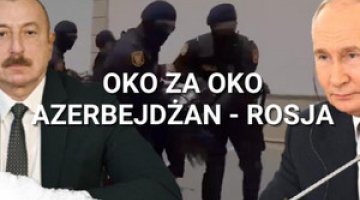Armenia’s shelling by Azerbaijan
During the night of 12-13 September, local clashes broke out along the border between Armenia and Azerbaijan, and Azerbaijani forces shelled Armenian positions using artillery, mortars and drones, in locations including the vicinity of Sotk and Vardenis, and the towns of Jermuk, Goris and Kapan. According to Baku, it was a response to Armenian provocations; according to Yerevan, it was an act of unprovoked aggression. For the time being, the total number of victims and the scale of destruction remain unknown. According to the Armenian Prime Minister Nikol Pashinyan, at least 49 Armenian soldiers were killed. On 13 September, at around 7am Central European time, the two sides announced a ceasefire, although for the time being it cannot be said that the crisis is over (according to Armenian reports, clashes were still taking place).
While the fighting was still going on, the Armenian Security Council decided to make a formal request for assistance to the Russian government and the Collective Security Treaty Organization (the CSTO sent a mission to unrest-stricken Kazakhstan in January this year). Pashinyan held telephone conversations with the presidents of Russia and France, as well as the US secretary of state. The Russian Foreign Ministry expressed its “extreme concern” over the situation and urged the parties to refrain from escalating tensions further, but Moscow has so far failed to take or announce any effective action. For its part, Turkey accused Armenia of provoking the clashes.
Commentary
- It is unclear why this escalation occurred or exactly how the events unfolded, but all indications are that moves by the Azerbaijani side were the driving force. Azerbaijan was probably responding to disproportionate degree to a series of local incidents that have been occurring along the Armenian-Azerbaijani border and in the Nagorno-Karabakh conflict zone since early September. Yerevan has consistently rejected Baku’s accusations that it has been shelling Azerbaijan from Armenian territory, although it cannot be ruled out that Armenia was indeed responsible to a considerable degree; circles opposed to Pashinyan, seeking to disrupt the peace process, may ultimately have been behind these attacks. In another version, Baku took advantage of Ankara’s support and the passivity of Russia, which is involved in the war with Ukraine (some soldiers of the local peacekeeping forces, who have been stationed in Nagorno-Karabakh since autumn 2020, have been transferred to Ukraine), and decided to push Yerevan into agreeing, as soon as possible, to open a route connecting the country’s core territory with the Nakhichevan exclave, and onward to Turkey.
- It seems certain that it is not currently in Azerbaijan’s interest to launch a new full-scale war, including the forcible recapture of that part of Nagorno-Karabakh not already under Baku’s control, as it is busy developing the lands which it captured during the 2020 war. Azerbaijan is also counting on finalising the peace process with Armenia (including the establishment of diplomatic relations); it is also committed to increasing its energy supplies to EU countries.
- The current escalation is likely to significantly hamper the Karabakh peace process. On 31 August, the Armenian prime minister and the Azerbaijani president met in Brussels (for the fourth time in a year), where they announced the continuation of their countries’ dialogue (among other things, the heads of diplomacy of both countries are supposed to be preparing a draft peace treaty). Pashinyan has strong public backing (he decisively won the parliamentary elections in 2021), although he also has to reckon with the opposition, which is associated with the so-called Karabakh clan, and includes supporters of the country’s former presidents Robert Kocharian and Serzh Sargsyan, and of the ruling elite in separatist Nagorno-Karabakh. It seems highly likely that at least some senior commanders in the Armenian army also sympathise with this group. Any escalation of tension represents an argument for the prime minister’s opponents that the talks with Baku are not promising. If his government fell – even though this is unlikely at present – that would harden Yerevan’s position towards the peace process with Azerbaijan and the ongoing talks with Turkey on opening the border. It should also be noted that a slowdown in negotiations benefits Moscow, which would like to maintain its peacekeeping forces in the region (the mandate for which expires in November 2025). Yerevan, and to a far greater extent Baku, want them to withdraw after this date.
- The aggravation of the situation poses a test to Russia’s capabilities and intentions. If Moscow succeeded in forcing its allies in the CSTO (which, apart from Armenia and Russia, also includes Belarus, Kazakhstan, Kyrgyzstan and Tajikistan) to send even a symbolic joint peacekeeping mission to the conflict area, this would demonstrate that it retains sufficient influence over these countries – particularly Kazakhstan – to assert its interests. This would have be of great propaganda importance in the context of the upcoming summit of the Shanghai Cooperation Organisation scheduled for 15-16 September (where, among other things, the leaders of Russia and China are expected to meet). In any case, if Moscow fails to react decisively to these recent events, this will demonstrate the ongoing erosion of its influence in the south of the former USSR. Regardless of this, Russia’s prestige has already been diminished by the fact that its peacekeeping forces have proved unable to counteract these further escalations of tension.
Work on this text was completed on 13 September 2022 at 11am CET.





